Brick building: lots of heat emanating from bricks on warm days
I live in a masonry/brick house, where the exterior walls are 2-bricks deep & the floor joists sit in slots between bricks.
While cutting the grass in the evening on a day in which it was pretty hot in the afternoon (90+ degrees), while hitting the grass up against the building, I could literally feel heat emanating from the bricks as if there was a fire on the other side (the interior). The brick did not necessarily feel hot to the touch, but it was if the air directly over the brick gave off heat with no obvious source. Is this just an observation of thermal mass in action?
Based on that observation, I assume the heat being released from the brick is not just to the exterior, but also to the interior, where only a 1″ fiberglass batt separates the brick from drywall. I assume the huge storage of heat by bricks makes the AC work harder than it has to when the day has already cooled off in the evening.
Is this a beneficial situation that I’m looking at in the wrong way?
Is there anything I can do to make cooling the interior more efficient given this situation?
GBA Detail Library
A collection of one thousand construction details organized by climate and house part



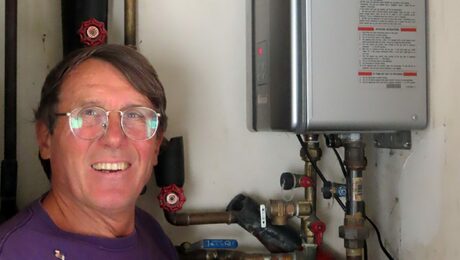
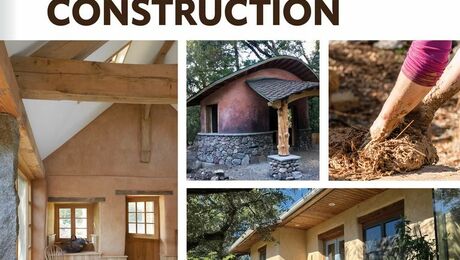
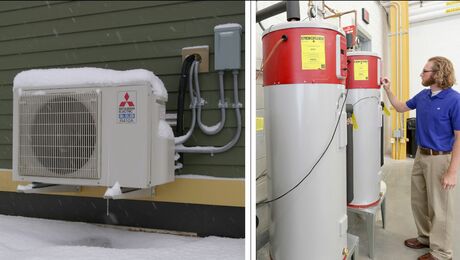
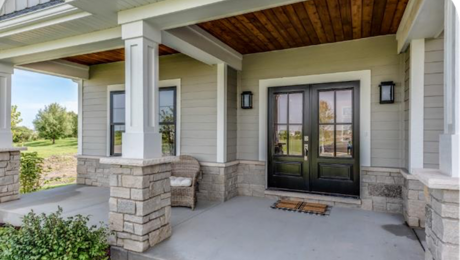
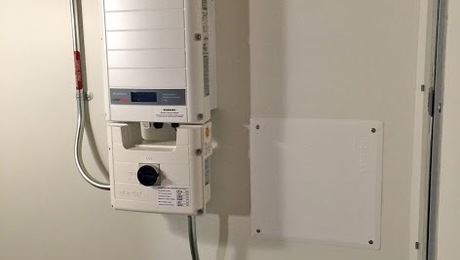

Replies
J.,
Yes, two wythes of brick represents a lot of thermal mass. Yes, direct sunshine will heat up those bricks. And yes, the way we separate the cool interior of our homes from the hot exterior is with insulation.
You have R-3 insulation in your walls, which isn't much. The solution isn't cheap, but it's simple: your walls would benefit from wall insulation -- to at least code minimum levels.
You could install insulation on the outside of your walls. (I would recommend EIFS if you go this route.)
You could install insulation on the inside of your walls. (I would recommend closed-cell spray polyurethane if you go this route.) Of course, interior work would be disruptive and expensive.
Or you could say, "That's what happens when you buy an old house," and just keep paying your air conditioning bill.
Martin's right. Let me also mention that if you insulate on the outside, the thermal mass of the bricks will work for you, enhancing the effect from the exterior insulation. Of course, you'll be covering up the bricks with something potentially not as pretty or durable, so yeah, that's the trade-off.
Thank you Martin & Nate. Ok, so it still all boils down to insulation at the end of the day.
With the "that's what happens you buy an hold home" comment, I'm unclear if what was meant was "old house" or "old brick house?" If I was in a stick-frame house built in the 1950s, would my insulation woes be a lot simpler/easier to fix?
I'll admit energy efficiency was not on my mind when searching for (my first) house, nor was there any preference towards brick vs. a stick/siding house. Brick houses are prevalent in this area (Chicago) & had I known insulating a brick house correctly was a hard/expensive feat, then yes, I probably would've avoided brick houses unless I knew how they were insulated.
I presume stick houses are built with insulation already being at something like R11 or higher in the walls, without much thermal mass to compete with. With brick you have a lot of directly-heated thermal mass & if it's a typical brick house without insulation on the outside of the brick, your interior insulation better be well-suited. My guess is that's not the case in most (old) brick houses.
But I guess now I know that the next house I buy should not be brick, because if the insulation is not up to par, it hurts you more as opposed to a stick-frame building thanks to all the thermal mass.
J.,
Every old house is different. An old wood-frame house can be a nightmare, too -- trust me. The way home buyers can educate themselves is to hire a qualified home inspector before purchasing a home and to ask the home inspector to describe the home's insulation levels.
Since, in your case, "energy efficiency was not on my mind when searching for (my first) house," your current predicament is not too surprising.
In general, it's harder to retrofit wall insulation in an older brick house than in an older wood-frame house. For more information on this issue, see Insulating Old Brick Buildings.
On the other hand, brick houses are beautiful. Just don't paint it.
Spray applied weather resistant barrier and exterior foam w/furring through-screwed to the masonry on which to mount siding is about as good as you can do with a double-wythe brick house. It' not a cheap solution, but it makes a huge difference.
With exterior foam on a double-wythe brick you can use the lower R values in the "MASS WALL R VALUE" in TABLE 1102.1.2 in Chapter 11 of the IRC to hit code-min:
http://codes.iccsafe.org/app/book/content/2015-I-Codes/2015%20IRC%20HTML/Chapter%2011.html
Don't forget to count the R3 of the interior side batts. eg: If you're in climate zone 3 or zone 4 you only need R8 total, and with R3 on the interior you can get there with (R8-R3=) R5, say an inch of foil-faced polyiso on the exterior, taking advantage of the thermal mass of the brick. In Zone 5 it takes R13 total, or R10 on the exterior, which can be done with 2" of polyiso. In colder climates it gets to be a bit on the thick side, and a bit more difficult to retrofit.
Reply to Stephen Sheehy:
Not all brick is beautiful.
Reply to James Morgan:
OK. Well maintained brick houses are beautiful. I didn't say they're all practical or energy efficient. On my way home from the beach today, I drove through Day's Ferry Maine, on the east side of the Kennebec River, opposite Bath. It has a bunch of lovely brick homes.
I could see how some brick houses might be considered beautiful. But as the OP of this thread, my brick house is nothing special in terms of aesthetics. The front of the house has decent/nice bricks, but the side & rear have that "found these bricks at the bottom of the pile" feel to them.
Martin, in response to your comment about finding a qualified home inspector, I could go on & on about what stuff was "missed" or not mentioned. When it came to insulation, all my inspector did is poke his head in the attic & say I could use more attic insulation. I honestly didn't even know what insulation was before I bought the house. Live & learn.
This link may help you explore your options http://www.illinoishomeperformance.org/getstarted Can't hurt to see what incentives may be available, and to talk to participating home performance contractors. You may have improvement opportunities that are more attractive than wall insulation.
I used to own a 1928 house with masonry walls (clay tile with brick exterior), and currently live in a 1938 house with thick stone siding (both in Wis.). On a hot day, the thermal mass means the interior of the house doesn't get hot until late afternoon, but the walls stay warm well into the evening/night. For me, this means the AC is running in the early evening/night when it's more efficient due to the lower outdoor temps. (Plus we've opted for time-of-use rates, so pre-cool before 10 AM, and start the AC after 9 PM most nights to take advantage of lower off-peak prices.)
The 1928 house had been retrofitted sometime in the '40s or '50s w/ one inch of blue rigid foam on the interior, contoured to "return" to the window casings, and skim coated w/ plaster and some sort of thick wall papery stuff as the interior paintable surface. Wouldn't meet modern fire code, but surprisingly well done for that era.
I have been living in the exact same type house for the past 37 years. Insulation is effective but disruptive and very expensive. I used the interior insulation path for most rooms (losing some sq ft in the process) but gained space to run plumbing and electric. The effect was so dramatic that we have yet to use the room heating in our bedroom during the Winter months (SouthCentral PA). But other rooms do not lend themselves to this method (narrow doorways next to an exterior wall; rooms with over 50% glazing in exterior walls). To partially answer the original question - you can construct a temporary trellis to shade the brick exterior during the Summer months. Does not need to be a massive structure, nor be very expensive (but good-quality construction will make it last longer). Does not even need to provide total shade - just enough to keep most of the room walls at ambient outside air temps. And only where the sun directly hits the wall. Does not even need to be that solid - a light structure for seasonal vines to grow on would work, as long as it is not English Ivy or other vines that dig into to mortar joints (so look to annual vines vs perennial).